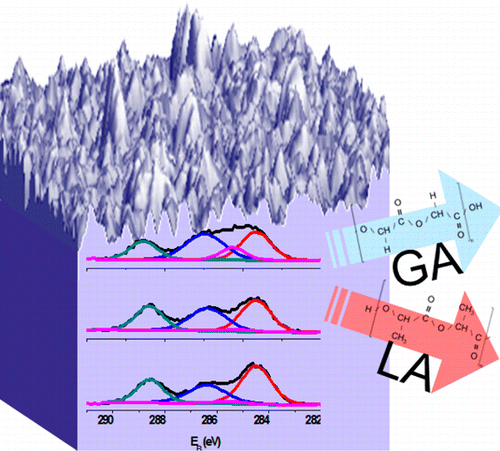C. López-Santos, A. Terriza, J. Portolés, F. Yubero, A.R. González-Elipe
Journal of Physical Chemistry C, 119 (2015) 20446-20452
doi: 10.1021/acs.jpcc.5b05011
Degradation under simulated physiological conditions of poly(lactic-co-glycolic) (PLGA) copolymer membrane films subjected to an oxygen plasma treatment compared to its “as prepared” state has been studied by gas cluster ion beam assisted X-ray photoelectron spectroscopy for chemical depth profiling analysis. This investigation is complemented with atomic force microscopy, weight loss measurements, and visual inspection of the films at the different stages of the degradation process. The obtained results show that the carbon functional groups of the PLGA membrane films undergo a heterogeneous hydrolytic degradation to different rates depending on the plasma pretreatment. The content of glycolic groups (GA) in untreated PLGA samples immersed for 3 weeks in a phosphate-buffered saline solution decreased at the surface, whereas the ratio between glycolic and lactic units (LA) did not vary in the inner regions (∼400 nm depth) of the degraded membrane films. By contrast, oxygen plasma pretreatment enhances the degradation efficiency and causes that both lactic and glycolic functional components decreased at the surface and in the interior of the film, although with less prevalence for the lactic units that present a comparatively higher resistance to degradation.


